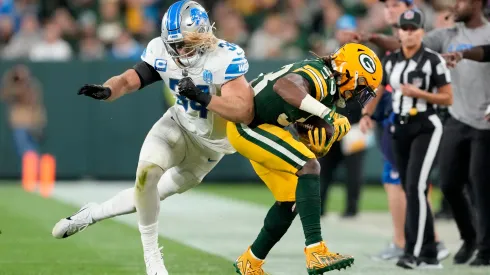In the NFL like and any other major sport, the clock is a crucial element of the game. While the clock typically stops under certain circumstances, such as when the ball is out of bounds or when a penalty is called, there are instances where it continues to run even when a player goes out of bounds. This might seem confusing, but there are compelling reasons behind this rule.
There are a few specific situations where the clock will stop even when a player goes out of bounds during a game. These exceptions are primarily designed by the league to ensure fairness and prevent injuries.
The decision to let the clock continue running when a player goes out of bounds is a carefully considered rule that aims to balance offensive aggression, prevent time-wasting tactics, and promote player safety. While there are a few exceptions to the rule, the overall goal is to keep the game moving at a fast pace and create an exciting experience for fans.
The clock keep runing
One of the primary reasons the clock keeps running when a player goes out of bounds is to encourage offensive aggression. By not halting the clock, the NFL incentivizes teams to push forward and gain as much yardage as possible before stepping out of bounds. This strategy keeps the game moving at a faster pace and creates more exciting moments for fans.
In the past, teams would intentionally run out of bounds to conserve time, particularly in the closing minutes of a game. By allowing the clock to continue running, the NFL and referees aims to prevent this time-wasting tactic and ensure that the teams don’t win the game by manipulating the clock.
The clock stops when a quarterback throws the ball out of bounds. This is because the ball is considered to be dead when it goes out of bounds, and the clock stops whenever the ball is dead. This is different when the player already catch the ball and he is out of bounds.
While the clock continues to run when a player goes out of bounds, there are still strategic considerations for offensive teams. If a player is close to the sidelines but not in danger of scoring, it might be beneficial to slide out of bounds to preserve their health and avoid a potential fumble. However, if the player is in scoring position, it makes sense to continue pushing forward to maximize their chances of scoring a touchdown.
Take in consideration when the clock is still running
In the final two minutes of the first half or the final five minutes of the second half, the clock will stop if a runner goes out of bounds backward after being contacted by a defender. This rule is in place to prevent the defense from intentionally pushing the offense out of bounds to conserve time.
What happens if a player is injured while the clock is running and he is out of bounds?
If a player is injured while going out of bounds, the clock will stop to allow the medical staff to attend to the player. This is a safety measure to ensure that players receive immediate attention if they are hurt.
